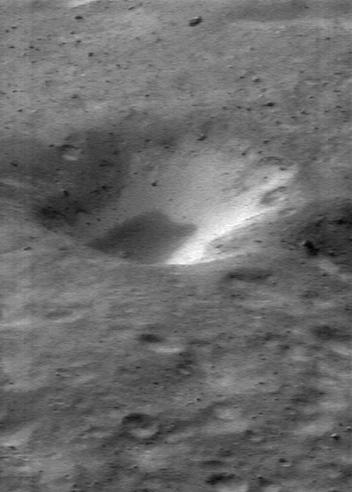NEAR Shoemaker, originally called NEAR, was the first spacecraft to orbit an asteroid. It was also the first spacecraft to land on an asteroid. The mission’s main target was Eros, one of the largest of the asteroids that come close to Earth. The spacecraft went into orbit around Eros in 2000 and landed on it in 2001. NEAR Shoemaker was a mission of the United States National Aeronautics and Space Administration (NASA).


NEAR Shoemaker’s goal was to document the shape, mass, composition, and magnetic properties of Eros. The probe’s various instruments included spectrometers, a magnetometer, and a camera. NEAR also took gravitational measurements around Eros and measurements of the solar wind. NEAR found that Eros is smaller than originally thought and that the asteroid is about as dense as Earth’s crust. The probe also confirmed that Eros lacks a magnetic field, the invisible area of influence that surrounds a magnetic object.
At the time of the mission, NEAR’s photos of Eros were the clearest photos ever taken of any asteroid. They showed features as small as 1 centimeter (7/16 inch). The images revealed broken boulders and unusual dust-filled craters that scientists called “ponds.” Scientists think seismic activity (shaking) caused surface dust to slide down into these craters.
On its journey to Eros, NEAR flew by a carbon-rich asteroid named Mathilde. The flyby revealed that Mathilde was heavily cratered. Mathilde also proved to be less dense than scientists had expected.
NEAR entered orbit around Eros on Feb. 14, 2000. When NEAR had studied Eros for almost a year, mission planners began preparing to land on the surface. However, the spacecraft was not designed to land. Because NEAR had no landing equipment, the landing had to be extremely gentle to avoid damage. Mission managers slowed the spacecraft’s descent to 4 miles per hour (6.4 kilometers per hour). The spacecraft touched down softly on Feb. 12, 2001, resting on the edge of its main body and the tips of two solar panels. NEAR continued transmitting data for two weeks after it landed.

NEAR Shoemaker was the first mission in NASA’s Discovery program. Discovery probes are small and inexpensive, and their missions’ science goals are tightly focused. NEAR Shoemaker showed that this approach to mission planning could succeed. Later Discovery missions included Mars Pathfinder, Stardust, and the Lunar Reconnaissance Orbiter.
The NEAR spacecraft launched in 1996. NEAR is short for Near Earth Asteroid Rendezvous. In 2000, NASA renamed the mission NEAR Shoemaker to honor the geologist Eugene M. Shoemaker, who had died in 1997. Shoemaker founded astrogeology, the study of the geology of the planets and their satellites. See also Asteroid; Space exploration (Exploring small solar system bodies).
